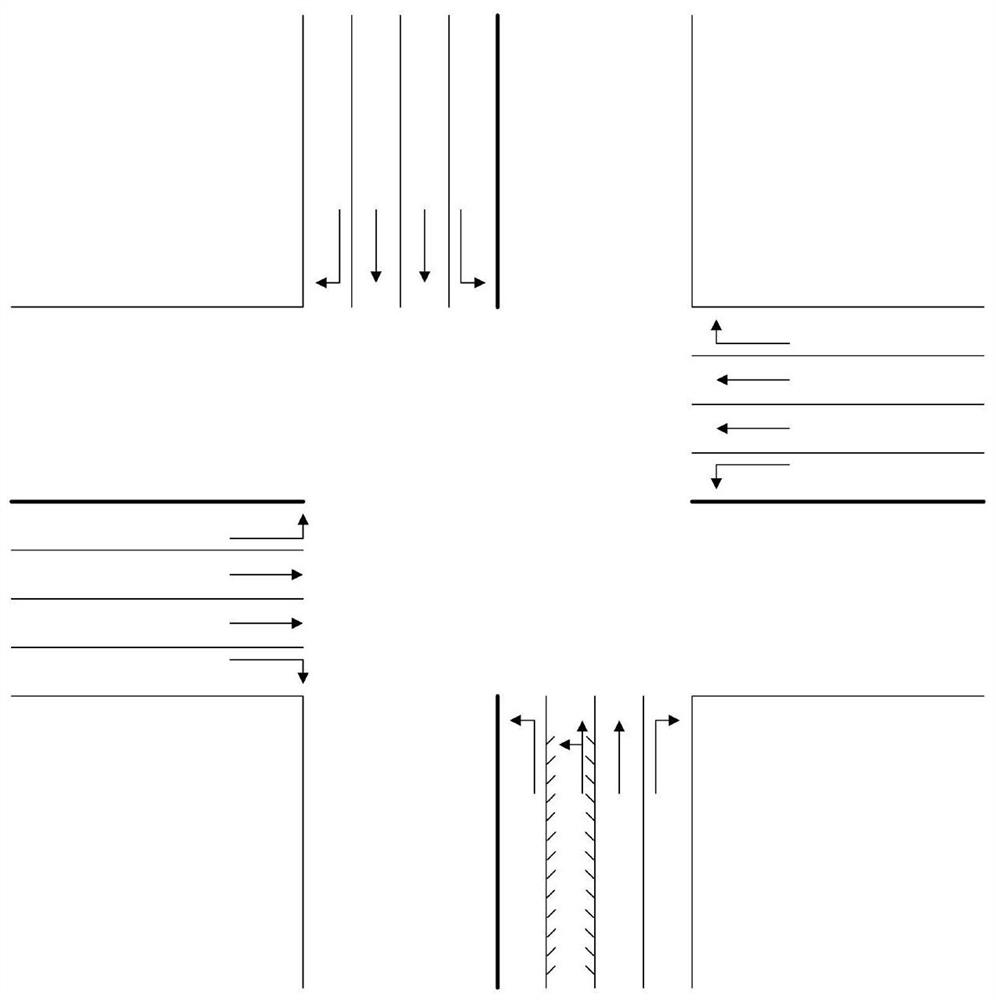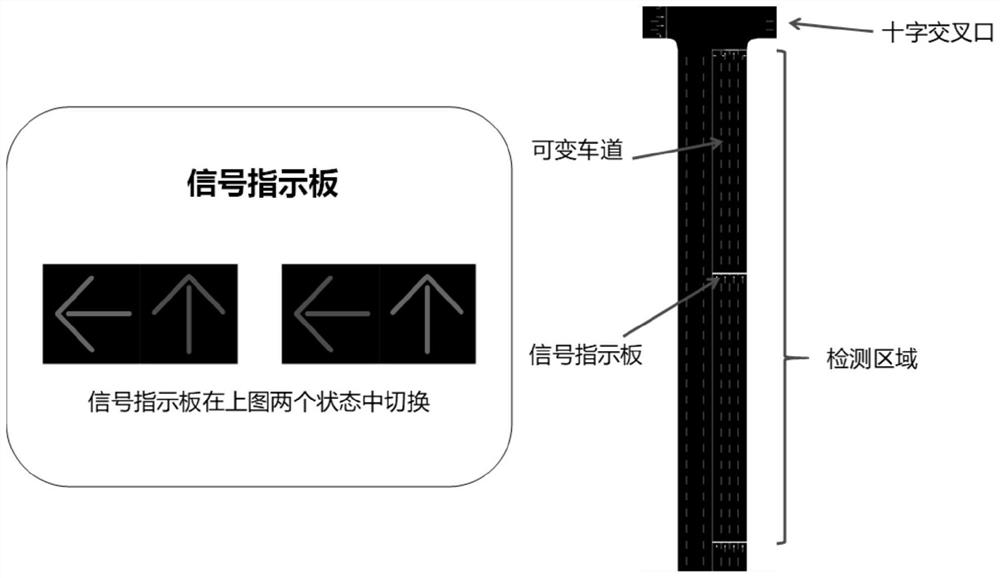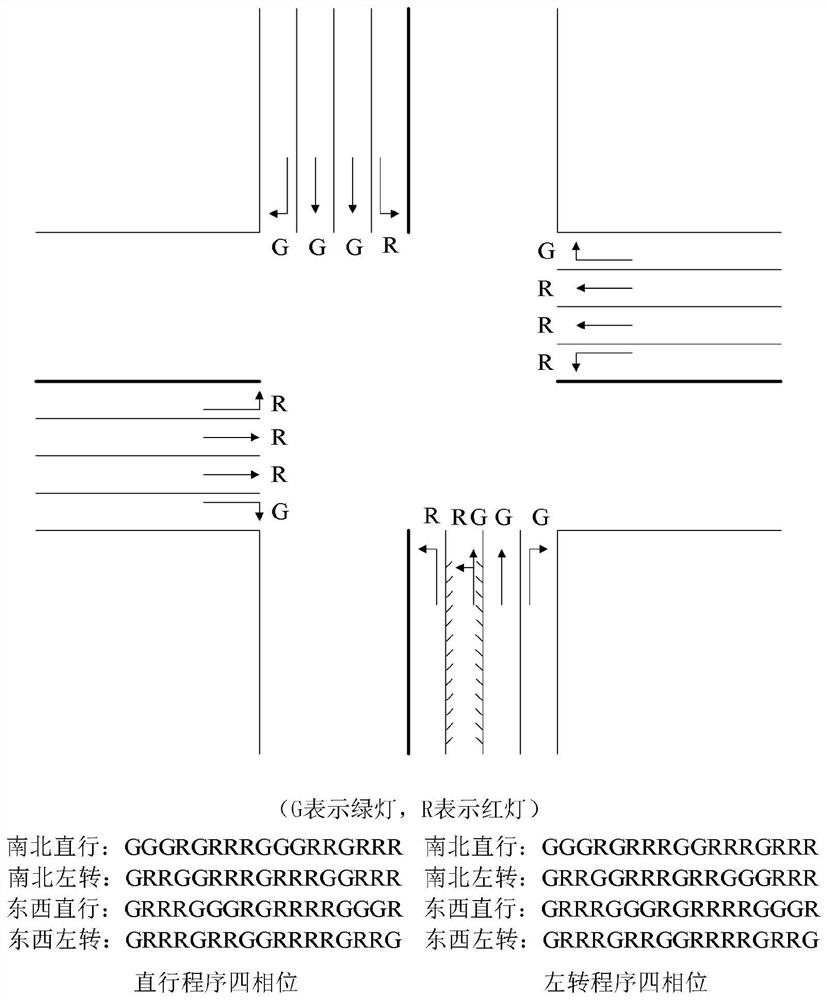Collaborative control method for variable lanes and traffic signals based on deep reinforcement learning
A technology of reinforcement learning and collaborative control, which is applied in the traffic control system of road vehicles, traffic signal control, traffic control system, etc., can solve the problems of poor coupling optimization and reduced traffic efficiency at intersections, and optimize time and space resources The effect of utilization efficiency
- Summary
- Abstract
- Description
- Claims
- Application Information
AI Technical Summary
Problems solved by technology
Method used
Image
Examples
Embodiment Construction
[0043] The following will clearly and completely describe the technical solutions in the embodiments of the present invention with reference to the accompanying drawings in the embodiments of the present invention. Obviously, the described embodiments are only some, not all, embodiments of the present invention. Based on the embodiments of the present invention, all other embodiments obtained by persons of ordinary skill in the art without making creative efforts belong to the protection scope of the present invention.
[0044] Such as figure 1 As shown, a conventional signalized intersection is taken as an example. Assume that the second single lane of the entrance road in the north-south direction is set as a variable lane, and each entrance road is set as a detection area at a certain distance from the intersection, such as figure 2 shown. exist figure 2 Only a schematic diagram of the detection area of the entrance road in the north-south direction is given in , and t...
PUM
 Login to View More
Login to View More Abstract
Description
Claims
Application Information
 Login to View More
Login to View More - R&D
- Intellectual Property
- Life Sciences
- Materials
- Tech Scout
- Unparalleled Data Quality
- Higher Quality Content
- 60% Fewer Hallucinations
Browse by: Latest US Patents, China's latest patents, Technical Efficacy Thesaurus, Application Domain, Technology Topic, Popular Technical Reports.
© 2025 PatSnap. All rights reserved.Legal|Privacy policy|Modern Slavery Act Transparency Statement|Sitemap|About US| Contact US: help@patsnap.com



